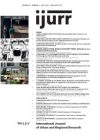The opening of borders in eastern Europe, accompanied by partial re–regulation and institutionalization of markets, created exceptional conditions for arbitrage in the form of cross–border trading. Whilst there is evidence that this is in decline in Central Eastern Europe, because of developments in the formal retail sector and convergence in trading and consumption, it persists as a significant alternative economic site in many other parts of eastern Europe and the former Soviet Union. This article explores three main aspects of cross–border trading in Trans–Carpathian Ukraine, a region at the frontier between ‘colliding’ economic systems. The article has three main objectives. First, it examines the roles of gatekeepers and operators, and their embeddedness in local economic and political systems. Secondly, based on a survey of 150 Ukrainian traders, it explores the socio–economic backgrounds and practices of the traders, especially gender differences, their modes of trading and capital accumulation. These are partly interpreted in terms of the uneven legacy of capital and social networks dating from the state socialist period. Thirdly, it considers the changing organizational forms of trading, especially a shift from petty cross–border trading to global sourcing of merchandise.
Details
Written by:
Allan M. Williams, Vladimir Baláž
Digital Object Identifier (DOI)
10.1111/1468-2427.00382
About DOI
Read full article as PDF
Read full article as HTML
See the references for this article
